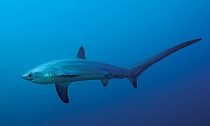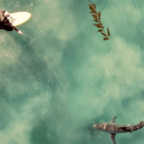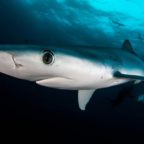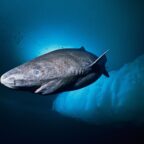
Conservation of our natural world has never been so important; in fact, the environmental journalist John Vidal called biodiversity loss a “crisis even bigger than climate change.” Thirty-one percent of the world’s sharks and rays are threatened with extinction according to the International Union for Conservation of Nature (IUCN).
These declines led to an interest in their conservation and sustainable management and one of the ways scientists and conservationists are coming together to protect sharks and marine biodiversity is through marine protected areas. Known better by their acronym, MPA, they are like the national parks we have on land in that human activities are strictly regulated than the surrounding area (or in this case, waters).
These places are given special protections for natural or historic marine resources by local, state, territorial, native, regional, or national authorities. “MPAs are designed and designated to protect marine species and biodiversity, to safeguard and rebuild ecosystems, help populations recover and increase their resilience, and aid with the mitigation of human impacts such as fishing and the exploitation of other marine resources.
This is often achieved by restricting access to these areas, again much like in national parks where some areas are off-limits to visitors as not to disturb wildlife,” explained Kristina Boerder, the lead author of a new paper on how to improve spatial protection for large pelagic fishes. She explained how spatial protection alone is insufficient to protecting animals and should be integrated with effective fisheries management to protect and rebuild stocks of highly migratory species.
Afterall, just like national parks, these marine areas do not have walls to keep from going in and out of the protected zone. Just like how national parks can be expansive, MPAs are as well and monitoring them is a big task. “Monitoring and enforcement over large ocean areas is challenging, but modern technology provides some powerful solutions. Satellite monitoring is increasingly being used to monitor the activity of ships in and around MPAs, such as tracking devices like the Automatic Identification System (AIS) or the Vessel Monitoring System (VMS). Further new technologies include the detection of lights on boats at night from satellites as well as high resolution imagery and radar.”
Sharks have important ecological, evolutionary, and socioeconomic roles and the consequences of their population declines and increases on social and ecological systems are not well studied. Some scientists and organizations, like PEW, believe that marine protected areas and/or shark sanctuaries are the best tools in our arsenal to help protect shark populations worldwide.
Many people wonder if these marine protected areas are the same as ‘shark sanctuaries,’ and Angelo Villagomez a senior officer with the Pew Bertarelli Ocean Legacy, says they should not be confused. “The MPA standards set by the International Union for Conservation of Nature do not allow for a “shark sanctuary” to count as an MPA. Marine protected areas are a more holistic approach to ocean conservation – they are designed to protect everything from sharks to groupers to lobsters, whereas the shark sanctuaries are mostly about reducing shark mortality.
Simply put, a shark sanctuary is a country that bans shark fishing. Shark sanctuaries are zero quota fisheries measures to stop directed shark fishing and reduce bycatch, while allowing for other types of fishing in a country’s waters,” Villagomez explained. He has worked on marine protected area and shark sanctuary designations since 2007 and has helped to designate some of the world’s largest MPAs and shark sanctuaries in both the Caribbean and Pacific.















Social Profiles